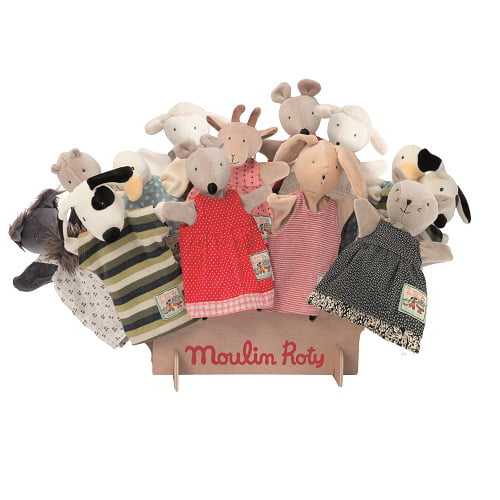- SSR
Morning Meeting - recall the Solstice and the Equinox lesson and ask, why do they not have Daylight Savings Time in Hawai'i?
Board Games - play our our new educational board game, Hello from Around the World Memory Game (thank you to the family who donated this!); use the Colored Globe of the Continents to find locations around the world; compare this list of countries with the children pictured in I Never Forget a Face to see if any are the same
Morning Math ages 10 & 11 - Basic Skills Daily Practice Warmups
(grade 6, 1st 6 weeks, week 1)
Basic Skills Daily Practice Warm-ups
these review 5th grade math
Morning Work Time: Plastic Utensils - individualized math MLBs
CR long division with the Racks & Tubes (Activity Set card 2.05),
AH & AG multiplying mixed numbers, KLL NOAA Data in the Classroom: Investigating Coral Bleaching module
Super Six! A Multiplying or Dividing Fractions Partner Game
Fable at Snack - consider different kinds of puppets and puppetry; read a legend suitable for shadow puppetry, The Crow & the Pitcher (link is to a wonderful collection of Aesop's Fables available free online at the Library of Congress)
Read Aloud at Lunch - Alice in Wonderland by Lewis Carroll, chapter 5, Advice from a Caterpillar (link is to read this book online for free at Carnegie Mellon University)
Afternoon Work Time: Pterodactyls - Place Value & Redwood Trees
recall that we talked about 100 with The Hundred-Year Barn and The Firehouse Light, recall that we talked about 500 with The 500 Hats of Bartholomew Cubbins, now we are going to do even bigger numbers!
read Redwoods by Jason Chin, get out the Number Cards and Golden Bead Material and make some of the numbers from the story
Legends of the Saints - read the legend of St. Martin of Tours (feast day Nov 11) retold by Ethel Marbach in More Once-Upon-a-Time Saints, discuss Martinmas and our Lantern Walk to be held on Friday at 5 pm, make lanterns (glass jars, tissue paper, glue, paintbrush)
Foods of the World: North America - make Fungi (foon-gee) from the Virgin Islands and the book Turtle Knows Your Name by Ashley Bryan
Tuesday, Nov 15
- SSR
Morning Work Time: Pterodactyls - 45 Layout, read The Autumn Calf by Jill Haukos, make and compare numbers with the Crocodile Game (197 < 200)
Morning Work Time: Plastic Utensils - individualized math MLBs
CR long division card 2.06, AH & AG continue multiplying mixed numbers, KW multiplication mosaic with the Colored Bead Material
Fable at Snack - read lesser-known fables from the Library of Congress: The Frogs & the Ox, The Young Crab & His Mother
Read Aloud at Lunch - Alice in Wonderland chap 6, Pig and Pepper
Foods of the World: North America - make Arroz Con Leche (Rice Pudding) from the Dominican Republic
Board Games - Yeti Slap, Plop Trumps Extreme, Dr. Eureka, I Never Forget a Face, Cauldron Quest, Lion in My Way
Wednesday, Nov 16
- SSR
Morning Work Time: Pterodactyls - Dice Game (3, 4, and 5 lines)
Afternoon Work Time: Pterodactyls - Infinity Street
Morning Work Time: Plastic Utensils - review of long multiplication with the Montessori materials (Checker Board, Checker Board Beads, Number Tiles), KLL What Is the World Record Flight for a Chicken?
Multiplying Fractions with Cross-cancellation
Fable at Snack - read lesser-known fables from the Library of Congress: The Two Goats, The Wolf & His Shadow
Read Aloud at Lunch - Alice in Wonderland chap 7, A Mad Tea-Party
Foods of the World: Oceania - find Guam on our map of the world, make Beef Tinaktak
Legends of the Saints - use craft wire and jewelry to add handles and charms to our Lanterns for the Lantern Walk
Handwork - finger knitting, knitting, embroidery, counted cross-stitch
Science Club - see detailed notes at Air Pressure: How and Why
Thursday, Nov 17
- SSR
set up Waldorf birthday ring for student turning 10 today!
Morning Work Time: Pterodactyls - review first three families on Infinity Street, read A Million Dots by Andrew Clements
Morning Work Time: Plastic Utensils - review of Order of Operations, math facts practice
Multiplication Mosaics - sample pages from Mindware
Division Designs - sample pages from Mindware
Fable at Snack - read lesser-known fables from the Library of Congress: The Monkey & the Dolphin, The Two Pots
Read Aloud at Lunch - Alice in Wonderland chap 8, The Queen's Croquet-Ground
Handwork - make knitting needles (AR, LL, CH)
How to Make Acorn Cap Knitting Needles blog post
Indoor Play - caravan, dollhouse furniture, wooden animals, play kitchen foods, Grapat mandala kits
Special Guest - Angela Davis, Superintendent of the Southeast Wastewater Treatment Plant for Carbondale
Friday, Nov 18 - Lantern Walk
Week of November 21 - Autumn Break
ages 10 & 11 assigned math practice over break
-
Assorted Math Practice (PDF)
KW - Time Units, green cards, pp.4-6, 10 (answer key)
CR - Open Ended Problems, yellow cards, pp. 14, 16 (answer key)
AH - Open Ended Problems, blue cards, pp.15, 17-18 (answer key)
AG - Decimal Competency Packet, pp.16-20
Multiplication
Multiplication by Multiples of 10
Division by Multiples of 10
Division by Whole Numbers
Division by Decimals
The photos to go with this week are here.
This post contains affiliate links to materials I truly use for homeschooling. Qualifying purchases provide me with revenue. Thank you for your support!


















































 Immersive Experience
Immersive Experience Immersive Experience
Immersive Experience